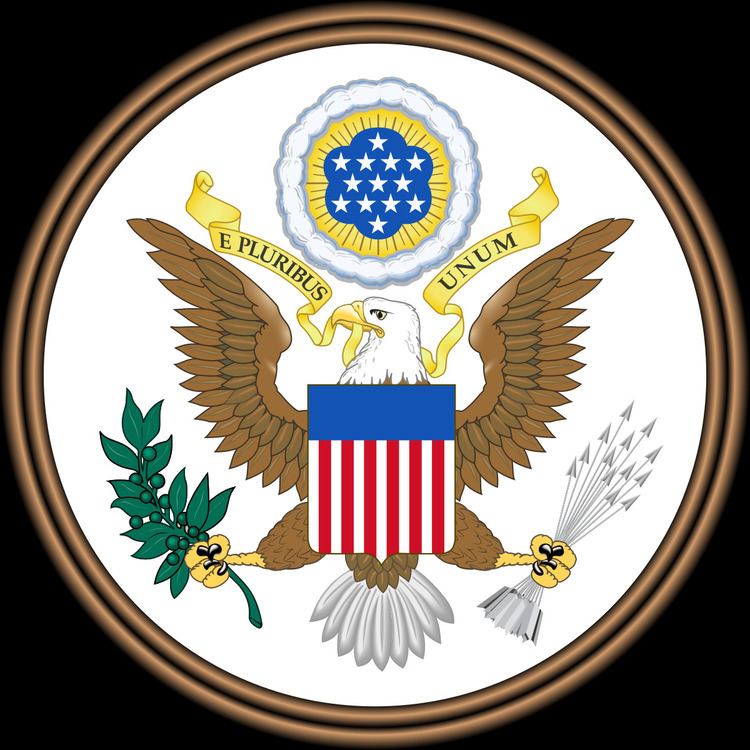Acronyms (colloquial) EBA | Effective March 9, 1933 | |
 | ||
Other short titles Bank Conservation Act of 1933
Emergency Banking Relief Act of 1933 Long title An Act to provide relief in the existing national emergency in banking, and for other purposes. Nicknames Emergency Banking Act of 1933 Enacted by the 73rd United States Congress | ||
The Emergency Banking Act (the official title of which was the Emergency Banking Relief Act), Public Law 1, 48 Stat. 1 (March 9, 1933), was an act passed by the United States Congress in March 1933 in an attempt to stabilize the banking system. Beginning on February 14, 1933, Michigan, an industrial state which had been hit particularly hard by the Great Depression in the United States, declared an eight-day bank holiday. Fears of other bank closures spread from state to state as people rushed to withdraw their deposits while they still could do so. Within weeks, thirty-six other states held their own bank holidays in an attempt to stem the bank runs. The banking system was on the verge of collapse. On March 4, Delaware became the 48th and last state to close its banks. Following his inauguration on March 4, 1933, President Franklin Roosevelt set out to rebuild confidence in the nation's banking system. On March 6 he declared a four-day banking holiday that kept all banks shut until Congress could act. A draft law prepared by the Treasury staff during Herbert Hoover's administration, was passed on March 9, 1933. The new law allowed the twelve Federal Reserve Banks to issue additional currency on good assets so that banks that reopened would be able to meet every legitimate call.
The Emergency Banking Act, an amendment to the Trading with the Enemy Act of 1917, was introduced on March 9, 1933 to a joint session of Congress, and was passed the same evening amid an atmosphere of chaos and uncertainty as over 100 new Democratic members of Congress swept into power determined to take radical steps to address banking failures and other economic malaise. The EBA was one of President Roosevelt's first projects in the first 100 days of his presidency. The sense of urgency was such that the act was passed with only a single copy available on the floor of the House of Representatives and legislators voted on it after the bill was read aloud to them by Chairman of the House Banking Committee Henry Steagall. Copies were made available to senators as the bill was being proposed in the Senate, after it had passed in the House.
According to William L. Silber "The Emergency Banking Act of 1933, passed by Congress on March 9, 1933, three days after FDR declared a nationwide bank holiday, combined with the Federal Reserve's commitment to supply unlimited amounts of currency to reopened banks, created de facto 100 percent deposit insurance. Much to everyone's relief, when the institutions reopened for business on March 13, 1933, depositors stood in line to return their stashed cash to neighborhood banks. Within two weeks, Americans had redeposited more than half of the currency that they had squirreled away before the bank suspension. The stock market registered its approval as well. On March 15, 1933, the first day of stock trading after the extended closure of Wall Street, the New York Stock Exchange recorded the largest one-day percentage price increase ever with the Dow Jones Industrial Average gaining 8.26 points to close at 62.10; a gain of 15.34 percent. With the benefit of hindsight, the nationwide Bank Holiday and the Emergency Banking Act of March, 1933, ended the bank runs that had plagued the Great Depression."
In March 1933 President Roosevelt signed Executive Order 6102 criminalizing the possession of monetary gold by any individual, partnership, association or corporation and Congress passed a similar resolution in June 1933.
This act was a temporary response to a major problem. The 1933 Banking Act passed later that year presented elements of longer-term response, including formation of the Federal Deposit Insurance Corporation (FDIC).
